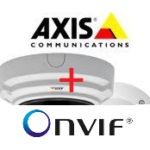Basically, ONVIF is a standard network protocol for IP-based physical security products. It is mainly used in the field of video surveillance. IP devices, such as cameras and NVRs, communicate over the network by sending data to each other. To ensure that they know how to communicate on the network, they must be able to speak the same language. That’s what the ONVIF standard is: a communication protocol.
History
Before ONVIF, each camera manufacturer created its own communication protocol. For example, Axis created the VAPIX protocol which they implemented in their cameras and video recorders. This way, an AXIS recorder was able to communicate with AXIS cameras using the VAPIX protocol. But what if you wanted to connect another brand of camera to the NVR, like a Hikvision? It was often impossible.
Organization
Three companies, Axis Communications , Bosch Security Systems and Sony Corporation joined their expertise and founded the ONVIF Forum. They have created a standard protocol to allow IP products in CCTV and other security industries to communicate with each other.
Advantages
ONVIF for IP products has several advantages. A standardized protocol for IP-based products allows integrators and end users to easily integrate products from different vendors into a single solution. If both devices speak the same language, they can work together, even if they are not from the same manufacturer. For example, it would allow you to connect a Vivotek camera to a Dahua NVR .
Here is a quick video from ONVIF describing the benefits of a standardized protocol:



